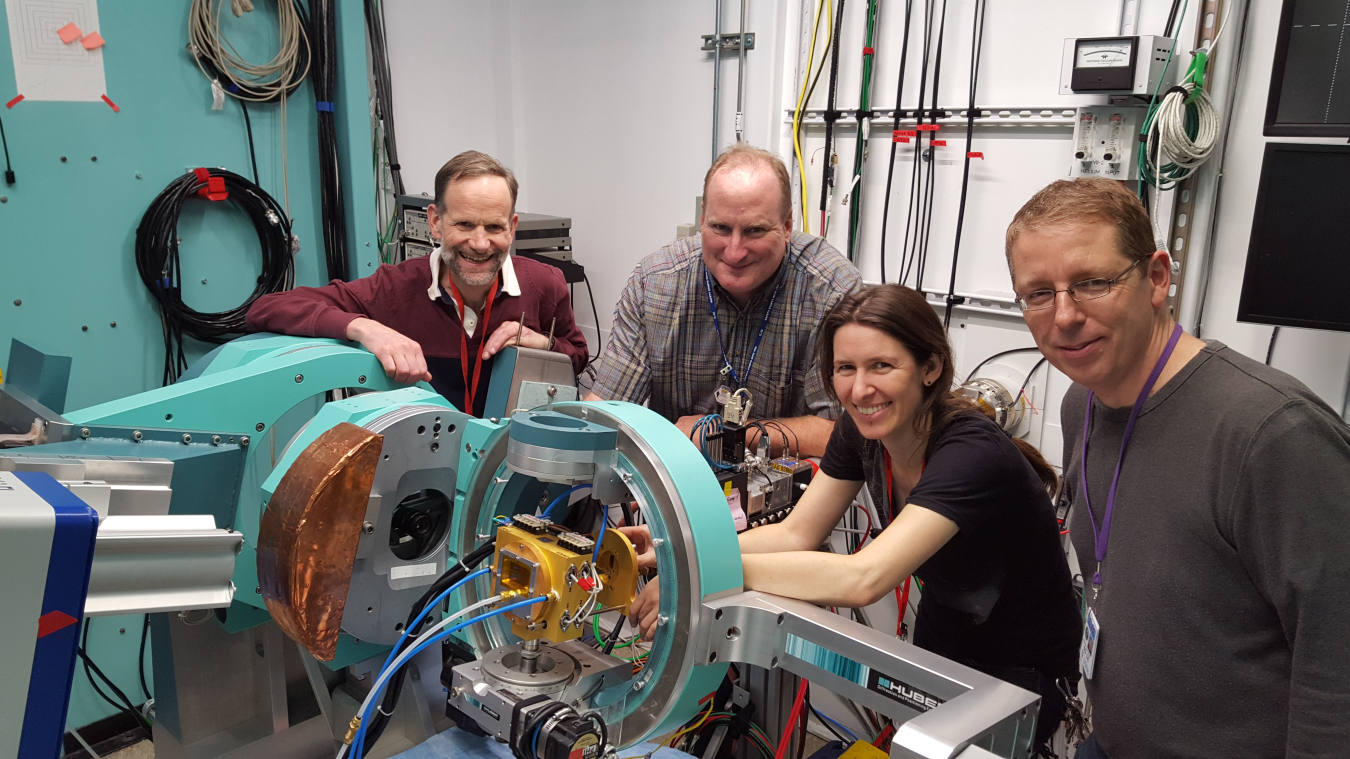
The SLAC/NREL research team poses with the rapid thermal processing instrument at SLAC, which allowed them to uncover how contact paste performs in solar modules.
As any athlete will tell you, going back to the basics when practicing a sport can provide a refreshed perspective on skills that will improve overall performance. One SunShot Initiative awardee found the same principle can be applied to the science behind the decades-old practice of attaching metal contacts to solar cells.
The SunShot Initiative funded basic research into the contact formation of a solar cell as part of the Bridging Research Interactions through collaborative Development Grants in Energy (BRIDGE) funding program. The project is a collaboration between the SLAC National Accelerator Laboratory at Stanford University and the National Renewable Energy Laboratory (NREL). One of the most important steps in making solar cells and modules is creating good metal contacts, which will effectively collect the electrons generated by the sunlight that shines onto a solar panel. The most common way to make metal contact lines is to screen-print a specialized paste containing metal particles onto a silicon solar cell and heat it up to form an electrical connection. Pastes have been optimized over the years to ensure low electrical resistance, which maximizes the current coming out of the solar cell. However, solar manufacturers and scientists have never understood the exact reactions taking place as pastes are fired and the electrical contact to the solar cell is formed.
SunShot funding allowed researchers at SLAC the opportunity to use X-rays to study the reaction of metal-containing paste with silicon solar cells at different stages of contact formation. To do that, they first designed and built a rapid thermal processing instrument to allow for real-time collection of the X-ray data as industry-standard paste is fired. Using this tool, researchers found that each contact starts as a glass paste containing small silver particles and lead oxide. As temperatures rise during manufacturing, the glass paste melts and releases lead ions that etch away the silicon's anti-reflective coating. As temperatures continue rising, silver ions travel through the molten glass and deposit on the underlying silicon. Once cooled, the finished contact contains three different types of silver – solid silver beads that have bonded together by heat, tiny silver particles within the solid glass, and solid silver on the silicon surface. All three types of silver are needed to make the contact effective.
The new knowledge of what transpires between the paste and the solar cell during processing opens the door to explore the use of new materials in solar panels. Solar researchers and manufacturers now have the necessary tools to develop metal contact pastes that contain less silver, which would potentially lower the overall cost of solar panels. In addition, researchers now understand the role that lead plays in the paste composition and are equipped to find better alternatives.
By completing this important research, the SunShot Initiative takes another step forward in making solar energy cost competitive with traditional forms of electricity. Learn more about other projects in the Photovoltaics subprogram.
